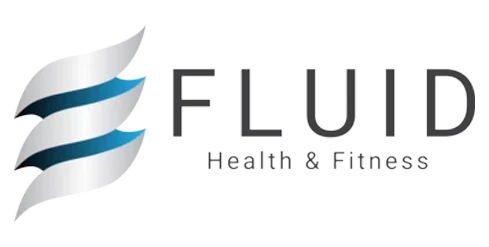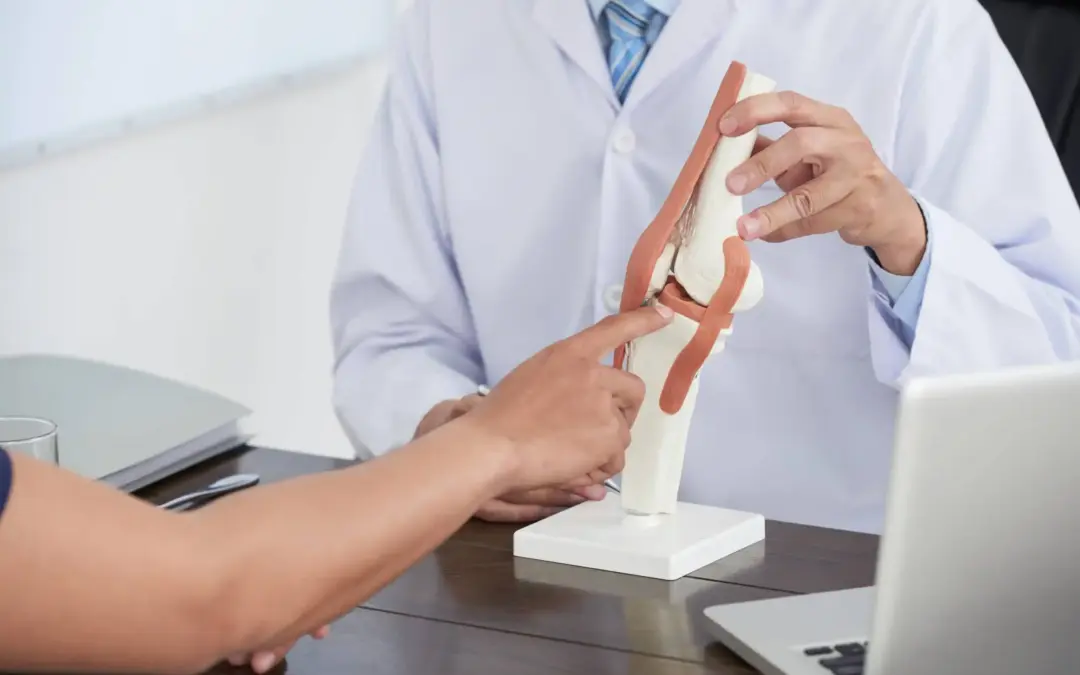
Optimal human movement is not the result of one system acting in isolation—it’s a complex orchestration between the skeletal, muscular, neural, and fascial systems.
At Fluid Health and Fitness, we believe that understanding this integration is essential for movement precision, injury prevention, and long-term performance. This blog consolidates two critical physiological topics: arthrokinematics—the joint-level mechanics that make movement possible—and muscle function, including how muscles are classified, recruited, and adapted for performance. Whether you are rehabilitating an injury or optimizing strength, mastering these fundamentals will enhance both your understanding and execution of movement.
Why It Matters
Movement quality and performance begin with structural control, not brute strength. Without understanding the mechanics of joint movement (arthrokinematics) and the behavior of different muscle types, compensatory patterns will form, leading to joint instability, poor biomechanics, and heightened injury risk. Educating yourself on these foundational topics allows you to:
-
Identify why certain exercises feel unstable or ineffective.
-
Recognize early warning signs of joint misalignment or muscle imbalance.
-
Improve exercise selection and cueing for safety and efficacy.
-
Align training methods with physiological intent—be it joint stabilization, postural control, or explosive power.
This is how Fluid builds resilience and performance—structure before conditioning, movement quality before intensity.
Core Concepts
Arthrokinematic Motion: The Hidden Mechanics of Joint Function
Arthrokinematics refers to the subtle, often invisible movements between joint surfaces that make gross (large-scale) limb movements possible. These motions—roll, glide, spin, compression, and distraction—must occur in a coordinated fashion to maintain joint centration, or the optimal alignment of the joint during movement. Arthrokinematics underlies the concept of movement quality, where the joint moves through its full range without stress, impingement, or compensation.
| Term | Description |
|---|---|
| Roll | One joint surface rolls over another, like a tire rolling on the ground. |
| Glide | One joint surface slides across another, like a box sliding across a table. |
| Spin | A single point on one surface rotates against a single point on another. |
| Compression | Joint surfaces move closer together, enhancing stability under load. |
| Distraction | Joint surfaces move apart, reducing compressive forces, often used in therapy. |
Open-Chain vs. Closed-Chain Motion: Contextualizing Arthrokinematics
Arthrokinematic behavior changes based on whether the movement is open-chain or closed-chain. Understanding the distinction between these two forms is critical for optimizing exercise selection, correcting compensations, and managing load through the kinetic chain.
| Chain Type | Description | Examples | Arthrokinematic Implications |
|---|---|---|---|
| Open-Chain | The distal segment (e.g., hand or foot) is free to move, while the proximal segment is fixed. | Leg extensions, bicep curls | Roll and glide primarily occur at the moving distal joint. Requires intrinsic joint stability and neuromuscular control. |
| Closed-Chain | The distal segment is fixed, and the proximal segment moves relative to it. | Squats, push-ups | Joint mechanics shift: Multiple joints share load and motion. Greater joint compression and co-contraction for stability. |
Example – Shoulder Press (Open-Chain): As the humerus moves overhead, the humeral head must roll upward and glide inferiorly within the glenoid to avoid impingement.
Example – Push-Up (Closed-Chain): The hands are fixed, and the scapula and thorax move around the humerus. Joint compression increases, requiring more co-contraction from stabilizers like the rotator cuff and serratus anterior.
Why This Matters in Your Training
Open-chain movements challenge isolated joint control and are often used for specific strengthening or rehabilitation, especially when joint motion needs to be closely monitored. Closed-chain movements, in contrast, emphasize integrated function across multiple joints and require the body to manage compression forces and joint alignment under load—making them foundational in functional strength training.
-
Open-Chain Risks if Misapplied: Excessive shear force, poor joint centration, and compensation from global muscles.
-
Closed-Chain Risks if Misapplied: Over-compression, poor alignment of adjacent joints, or forced movement through restricted ranges.
Muscle Function and Classification: Purpose-Driven Physiology
Intrinsic Stabilizers
-
Function: Maintain joint alignment and control micro-movements.
-
Muscles: Rotator cuff, multifidus, transverse abdominis.
-
Role in Training: Foundational in core stability, postural rehab, and neuromuscular control.
Single-Joint Stabilizers
-
Function: Control movement and provide stability at a single joint.
-
Muscles: Vastus medialis, deltoid.
-
Role in Training: Isolated control and stability, especially in early rehabilitation stages.
Polyarticular Muscles
-
Function: Transmit force across multiple joints for powerful, coordinated movement.
-
Muscles: Hamstrings, latissimus dorsi, rectus femoris.
-
Role in Training: Compound lifts (e.g., deadlifts, squats) where force is distributed across joints.
Phasic vs. Tonic Muscles: Movement vs. Stability
| Type | Characteristics | Common Examples |
|---|---|---|
| Phasic | Quick-twitch fibers, fatigue quickly, used for movement | Gluteus maximus, deltoids |
| Tonic | Slow-twitch fibers, resist fatigue, used for posture | Erector spinae, iliopsoas |
These categorizations matter because imbalances develop when one type overcompensates for the other:
-
Hyperphasic/Hypertonic: Overactive or overly tense muscles (e.g., tight hip flexors in sedentary individuals).
-
Hypophasic/Hypotonic: Underactive or disengaged muscles (e.g., glutes that fail to activate during squats).
Addressing these adaptations ensures balanced muscle recruitment, critical for both rehabilitation and high-performance training.
Muscle Contractions and Their Purpose
Understanding the types of muscle contractions helps you match your training goal with the correct stimulus:
| Contraction Type | Description | Application |
|---|---|---|
| Concentric | Muscle shortens to produce movement | Lifting phase of a squat |
| Eccentric | Muscle lengthens under tension | Lowering phase of a lunge |
| Isometric | Muscle tension without movement | Holding a plank or wall sit |
| Isokinetic | Constant-speed contractions (usually machine-based) | Rehabilitation environments |
| Positional Isometrics | Static contractions at specific joint angles | Joint-specific stabilization drills |
These principles also explain why different fibers are recruited for different tasks:
-
Stability and joint control call on tonic (slow-twitch) fibers.
-
Power and speed recruit phasic (fast-twitch) fibers, especially in polyarticular movements.
Step-by-Step Expectations for Application
- Assess Movement Qualtiy First Look for signs of joint instability (e.g., shoulder popping during pressing) or muscle imbalance (e.g., one side compensating).
-
Prioritize Intrinsic Stability and Motor Control Start with exercises that reinforce joint centration and local muscle activation before progressing to high-load, global movements.
-
Educate Yourself on Joint Mechanics Understand how roll and glide principles apply to your current lifts. Modify technique to respect joint alignment.
-
Use Contraction Types Strategically Apply eccentric control for deceleration, isometric holds for stability, and concentric movements for power.
-
Identify and Correct Muscle Imbalances Recognize signs of hyperphasic/hypophasic muscles. Apply corrective strategies such as positional isometrics or neuromuscular re-education.
Preparation: What You Should Know Before You Train
-
Learn to distinguish movement that is efficient versus compensatory.
-
Understand your body’s structural limitations—past injuries, mobility restrictions, habitual posture.
-
Begin with a functional movement screen or biomechanical assessment to identify your specific needs.
Aftercare and Progression
-
Recovery Is Critical: Avoid over-recruiting dominant muscle groups. Include active recovery and mobility sessions to maintain tissue pliability and joint integrity.
-
Reassess Regularly: Movement patterns and muscle recruitment can shift with fatigue, stress, or load changes. Schedule periodic reassessments.
-
Progress Strategically: Increase load only after confirming stability and controlled motion. Avoid jumping into complex lifts before foundational control is established.
Summary
Mastery of joint mechanics and muscle function is not optional—it is essential. At Fluid Health and Fitness, we guide you to train smarter by respecting the complexity of the human movement system. Whether you are recovering from pain or enhancing performance, remember: movement quality begins with understanding the “why” behind what you do. Structure precedes strength. Precision precedes power.



